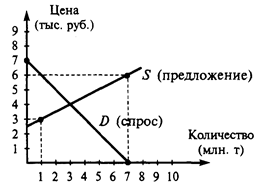Word-for –word translation was widely practiced in the famous Toledo school in the central Spain(12-13centuries) where the outstanding translator of that country Gerhard of Cremonas worked. Among the works translated there were scientific (as alchemy), mathematical works (on arithmetic, algebra, geometry, physics, astronomy), philosophy, medicine. However, in Northern Spain another school of translation functioned where “sense-to-sense” approach was predominant and translations there were mostly performed from Greek into Hebrew (usually through Arabic). These same two principles, according to Solomon Ibn Ajjub, one of the greatest authorities on translation in the middle of the 13th century, were practiced in the southern Italian school (Rome), which had fallen under a strong Arabic cultural influence as well. Secular works were translated in this school with many omissions, additions, and paraphrases of their texts, which changed the original works beyond recognition. This was the logical consequence of the method initiated by Horace and his adherent Apuleius, who applied their practice to free treatment of secular works under translation. That approach, meeting little if any resistance, dominated in European translation of secular works all through the Middle Ages and up to the 18th century. The only voice against the deliberate and unstricted “freedom’’ in translation was raised by English scientist and philosopher Roger Bacon.
In some countries translations greatly helped to initiate their national literary languages and literature. A graphic example of this, apart from Livius Andronicus, may be found in Eng history when King Alfred the Great took an active part in translating manuals, chronicles and other works from ancient languages and thus helped in the spiritual and cultural elevation of his people. His noble was continued by the abbot and the author Aelfric (955-1020) who would paraphrase some parts of the work while translating and adding his own part. Yet, Aelfric would consider this technique of rendering as a sense-to-sense translation. Abbot Aelfric himself admitted, that in his translation of the Latin work under the English title The Shepherd’s Book, he performed it “sometimes word-by-word” and “sometimes according to the sense”, in free translation. These same 2 approaches to translation were also characteristic of other European countries of the Middle Ages.
That approach (Secular works were translated in this school with many omissions, additions, and paraphrases of their texts, which changed the original works beyond recognition), meeting little if any resistance, dominated in European translation of secular works all through the Middle Ages and up to the 18th century. The only voice against the deliberate and unstricted “freedom’’ in translation was raised by English scientist and philosopher Roger Bacon, who strongly protested against this kind of rendering of Aristotle’s works into English.
No less intensively practiced alongside of the free sense-to-sense rendering in Europe during the Middle Ages was the strict word-for-word translation. Its domain of employment was naturally restricted to ecclesiastic and philosophic works. By this method the first ever translation of the Bible from Latin into English was accomplished in 1377-1380 by the religious scientist and reformer John Wycliffe.




